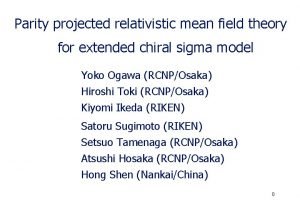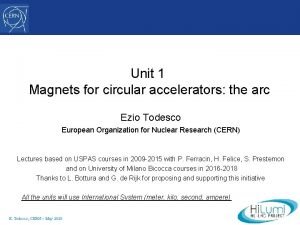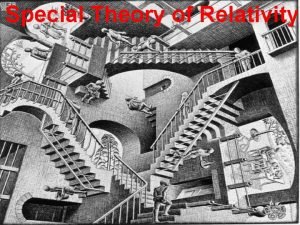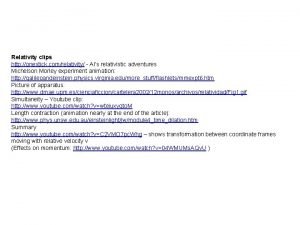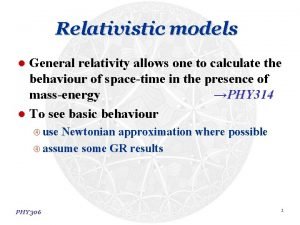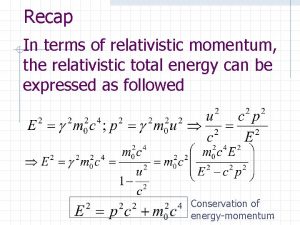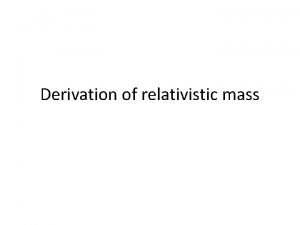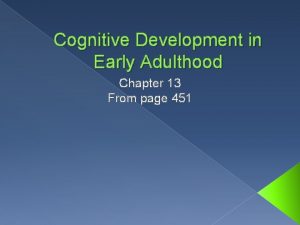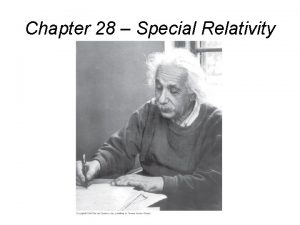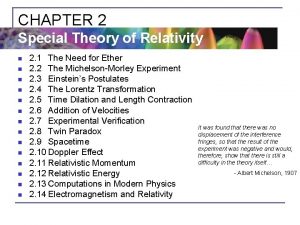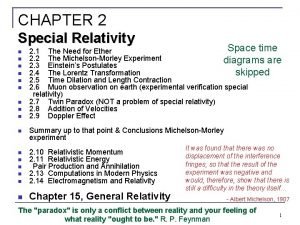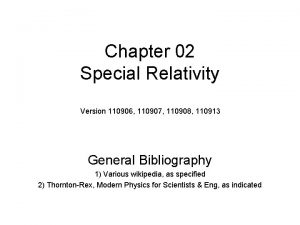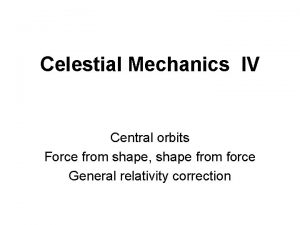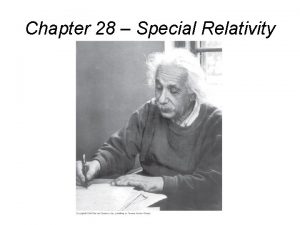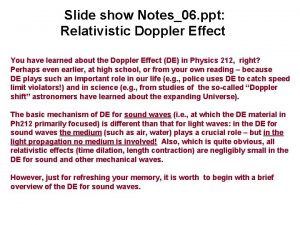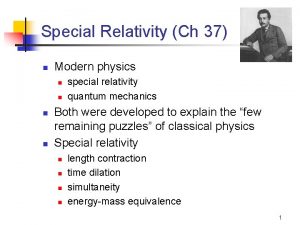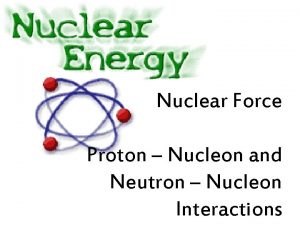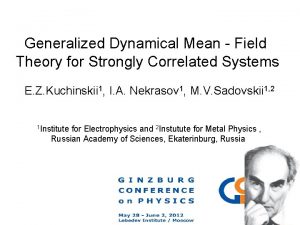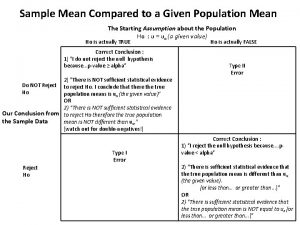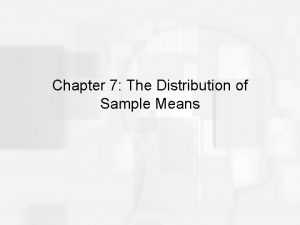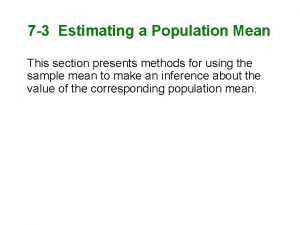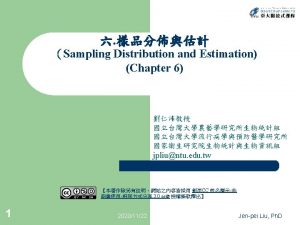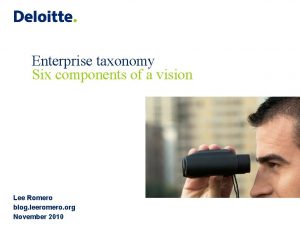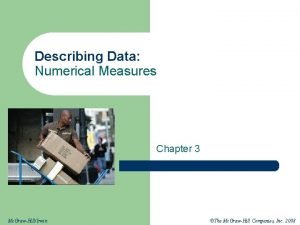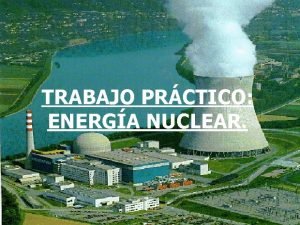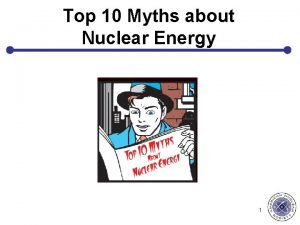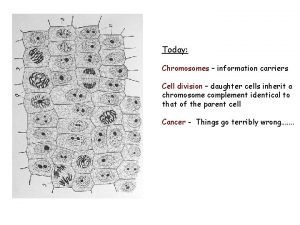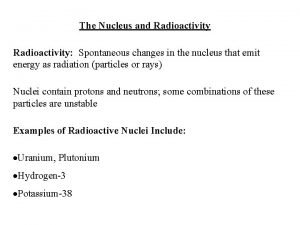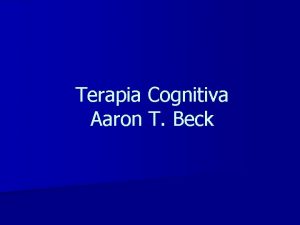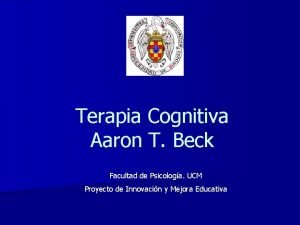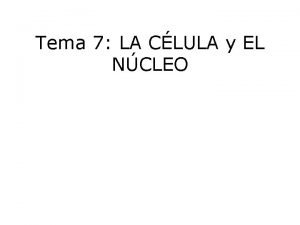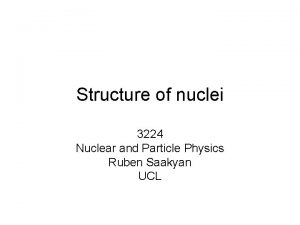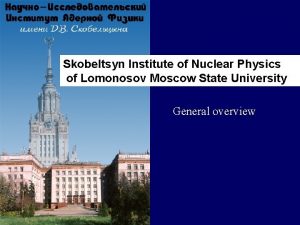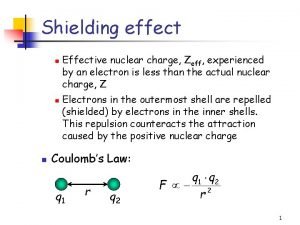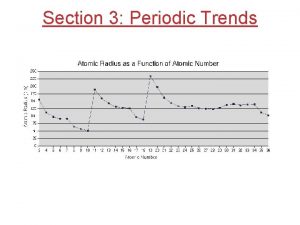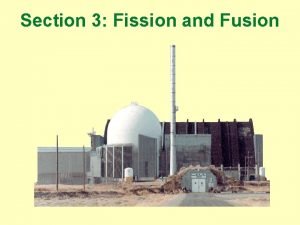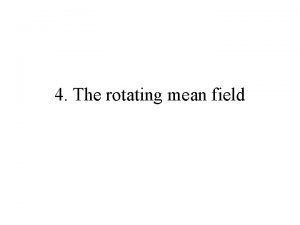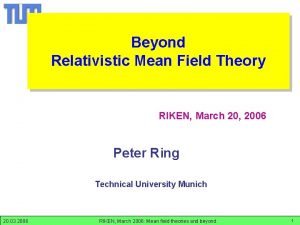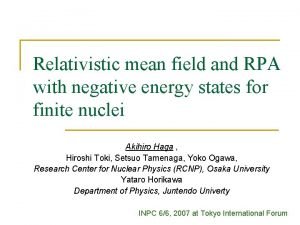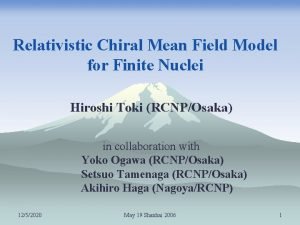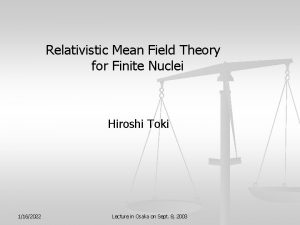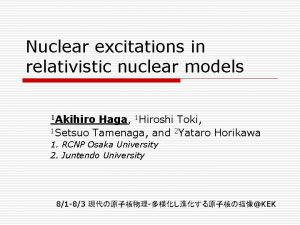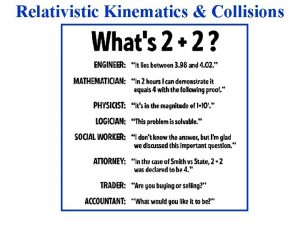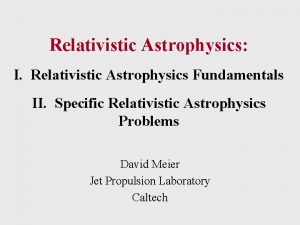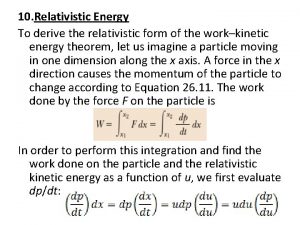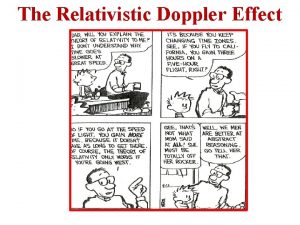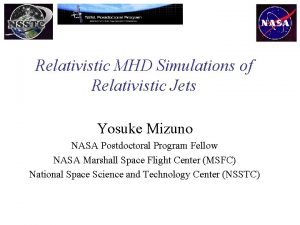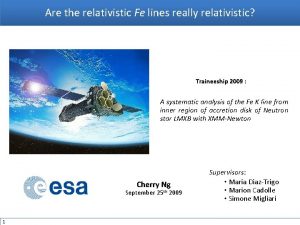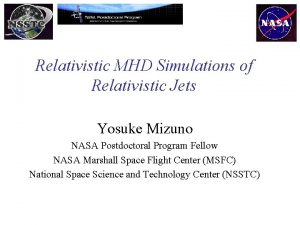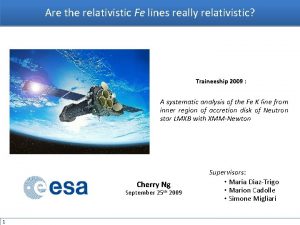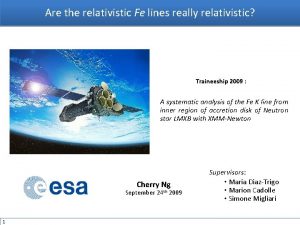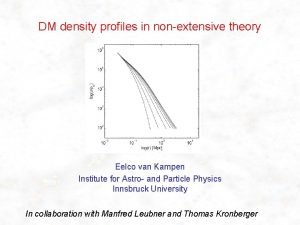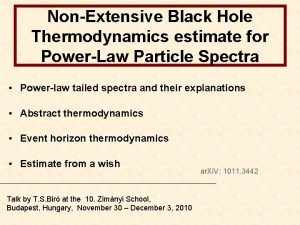Nonextensive critical effects in relativistic nuclear mean field


































































- Slides: 66

Nonextensive critical effects in relativistic nuclear mean field models Jacek Rożynek and Grzegorz Wilk The Andrzej Soltan Institute for Nuclear Studies Warsaw, Poland HCBM 2010 – Hot & Cold Baryonic Matter 2010 International Workshop on Hot & Cold Baryonic Matter 15 -20 August 2010, Budapest - Hungary

Content: - Motivation - Example: NJL model of QCD Nonextensive NJL model: q_NJL - Results - Summary Based on: J. Rożynek and G. Wilk J. Phys. G 36 (2009) 125108 and Acta Phys. Polon. B 41 (2010) 351. 2

Motivation ● The critical phenomena in strongly interaction matter are generally investigated using the mean-field model and are characterized by well defined critical exponents. ● However, such models provide only average properties of the corresponding order parameters and neglect altogether their possible fluctuations. Also the possible long range effect and correlations are neglected in the mean field approach. ● One of the possible phenomenological ways to account for such effects is to use the nonextensive approach. ● Here we investigate the critical behavior in the nonextensive version of the Nambu Jona-Lasinio model (NJL). It allows to account for such effects in a phenomenological way by means of a single parameter q, the nonextensivity parameter. ● In particular, we show the nonextensive statistics influences the region of the critical temperature and chemical potential in the NJL mean field approach. 3

Motivation ● The critical phenomena in strongly interaction matter are generally investigated using the mean-field model and are characterized by well defined critical exponents. ● However, such models provide only average properties of the corresponding order parameters and neglect altogether their possible fluctuations. Also the possible long range effect and correlations are neglected in the mean field approach. ● One of the possible phenomenological ways to account for such effects is to use the nonextensive approach. (… digression on nonextensivity and the like …) 4

Digression: …. nonextensive approach…. what does it mean? The simple rule of thumb is that, if in our attempts to fit data using statistical model(s) based on exponential distributions of the type (X = p. T , m. T cosh(y), (E-<E>)2 , …) we fail because data seem to follow rather power-like behaviour, we can try to fit them using the so called Tsallis distribution q ≠ 1 which becomes exponential when parameter q 1. In this way one can still use statistical language but based on the so called nonextensive statistics represented by Tsallis (for example) rather than usual Boltzman-Gibbs entropy. Parameter q summarizes action of all dynamical factors resulting in departure from the conditions needed for BG approach to be valid. When these factors are consecutively recognized and accounted for then q nears more and more to unity. 5

Digression: …. nonextensive approach…. what does it mean? 6

Digression: …. nonextensive approach…. what does it mean? 7

Digression: …. nonextensive approach…. what does it mean? This phenomenon is ubiquitous in all branches of science and very well documented. It occurs always whenether: (*) there are long range correlations in the system (or „system is small” – like our Universe with respect to the gravitational interactions) (*) there are memory effects of any kind (*) the phase-space in which system operates is limited or has fractal structure (*) there are intrinsic fluctuations in the system under consideration (*) …………. 8

Digression: …. nonextensive approach…. what does it mean? This phenomenon is ubiquitous in all branches of science and very well documented. It occurs always whenether: (*) there are long range correlations in the system (or „system is small” – like our Universe with respect to the gravitational interactions) (*) there are memory effects of any kind (*) the phase-space in which system operates is limited or has fractal structure (*) there are intrinsic fluctuations in the system under consideration (*) …………. 9

Digression: …. nonextensive approach…. what does it mean? ………………………………. illustration N-particle system N-1 unobserved particles form ”heat bath” which determines behaviour of 1 observed particle Heat bath characterized by one parameter: h - temperature T L. Van Hove, Z. Phys. C 21 (1985) 93, Z. Phys. C 27 (1985) 135. T 10

Digression: …. nonextensive approach…. what does it mean? ………………………………. illustration N-particle system N-1 unobserved particles form ”heat bath” which determines behaviour of 1 observed particle Heat bath characterized by one parameter: h - temperature T L. Van Hove, Z. Phys. C 21 (1985) 93, Z. Phys. C 27 (1985) 135. T 11

Digression: …. nonextensive approach…. what does it mean? ………………………………. illustration But: In such N-particle system ”thermodynamical” approach one has to remember assumptions of infinity and homogenity made when N-1 unobserved particles proposing this approach - only then behaviour of the form ”heat bath” which observed particle will be characterised by single parameter - the ”temperature” T determines behaviour of 1 observed particle In reality: Heat bath This is true only approximately and in most cases we deal with system which are neither infinite and nor homogeneous characterized In both cases: Fluctuations occur and new parameter(s) in addition to T by one parameter: is(are) necessary h - temperature Can one introduce it keeping simple structure of statistical model approach? T Yes, one can, by applying nonextensive statistical model. T L. Van Hove, Z. Phys. C 21 (1985) 93, Z. Phys. C 27 (1985) 135. 12

Digression: …. nonextensive approach…. what does it mean? ………………………………. illustration T varies fluctuations. . . T 4 T 2 T 6 T 1 h T 7 T 3 Heat bath Þ T 0, q T 0=<T> T 5 T 0=<T>, q Tk q - measure of fluctuations of T q-statistics (Tsallis) 13

Digression: …. nonextensive approach…. what does it mean? ………………………………. illustration T varies fluctuations. . . T 4 T 2 T 6 T 1 h T 7 T 3 Heat bath Þ T 0, q T 0=<T> T 5 T 0=<T>, q Tk q - measure of fluctuations of T q-statistics (Tsallis) 14

Digression: …. nonextensive approach…. what does it mean? ………………………………. illustration Generalization of the Boltzmann equation (cf. , T. S. Biro and G. Kaniadakis, EPJ B 50 (2006) 3, Biro et al. , EPA 40(2009)325) : nonextensive statistics can be obtained by changing the corresponding collision rates being nonlinear in the one-particle densities or – equivalently – by using nontrivial energy composition rules in the energy conservation constraint part Nonlinear Boltzman equation (NLBE) 15

Digression: …. nonextensive approach…. what does it mean? ………………………………. illustration Nonlinear Boltzman equation example for 1+2 ↔ 3+4 collision with rate of change of the one-particle phase space density f 1=f( ) ai = a(fi) - general production and bi=b(fi) - general blocking factors w 1234 - transition probability rate factor The standard theories are recovered for a(f)=f and b(f)=1, or b(f)=1 +/- f, respectively. In this case the stationary distribution is given by the ratio κ(f) = a(f)/b(f) , which becomes the traditional Boltzmann factor: This result assumes that in two-body collisions momenta and energy are composed additively: E 1 + E 2 = E 3 + E 4, p 1 + p 2 = p 3 + p 4 16

Digression: …. nonextensive approach…. what does it mean? ………………………………. illustration However, one can demand that the additivity of the energy during the micro-collisions is replaced by a more general requirement: only a given function of individual energies, physically standing for the total two-particle energy, is conserved: h(E 1, E 2) = h(E 3, E 4). The function h(x, y) describes a general, non-extensive energy composition rule for the two body system. If it is chosen with the property of associativity: h(h(x, y), z) = h(x, h(y, z)), then its most general form is related to a strict monotonic function, X(x): X(x) is mapping the non-extensive composition rule to the addition rule, i. e. , it is formal logarithm. It is unique up to a real multiplicative factor. The stationary solution in this case is: which for results in Tsallis distribution with 17 q=1 -a. T.

Digression: …. nonextensive approach…. what does it mean? The possible meaning of the parameter q: (*) q > 1 – action of some intrinsic fluctuations [14, 15] (*) q < 1 – action of some correlations or limitations of the phase space [16, 17] 18

Motivation ● Recently, q-statistics has been applied to the Walecka many-body field theory resulting (among others) in the enhancement of the scalar and vector meson fields in nuclear matter, in diminishing of the nucleon effective mass and in the hardening of the nuclear equation of state (only q>1 case was considered there). ● Here we investigate the critical behavior in the nonextensive version of the Nambu Jona-Lasinio model (NJL). It allows to account for such effects in a phenomenological way by means of a single parameter q, the nonextensivity parameter. The NJL model we modify is that presented in In particular, we show the nonextensive statistics influences the region of the critical temperature and chemical potential in the NJL mean field approach. 19

Example of NJL model of QCD 20

Example of NJL model of QCD The baryonic thermodynamical potential of the grand canonical ensemble, Ω(T, V, μi ) is also obtained directly from the effectve action Weff above. 21

Example of NJL model of QCD 22

Example of NJL model of QCD 23

Example of NJL model of QCD To summarize: The gap equations for the constituent quark masses Mi where form a self consistent set of equations from which one gets the effective masses Mi and values of the corresponding quark condensates. 24

Example of NJL model of QCD Only π0 and σ mesons were considered as illustration. Their effective masses are obtained from the effective action Weff (eq. (4)) by expanding it over meson fields and calculating the respective propagators. In the case of a σ meson one must account fot its matrix structure in isospin space. Parameters used: 25

Nonextensive NJL model: q-NJL Motivation ● The NJL model is formulated in the grand canonical ensemble and assumes the additivity of some thermodynamical properties, especialy entropy. ● This is a very strong approximation for the system under the phase transition where long-range correlations or fluctuations are very important. ●One could, alternatively, consider equilibrium statistics using microscopic ensembles of Hamiltonian systems, whereas canonical ensembles fail in the most interesting, mostly inhomogeneous, situations like phase separations or away from thermodynamical limit [31]. ● The alternative way to describe the nonadditivity of interacting systems which have long-range correlations is to use q-statistics [32]. 26

Nonextensive NJL model: q-NJL Motivation 27

Nonextensive NJL model: q-NJL Motivation 28

Nonextensive NJL model: q-NJL Motivation ● Finally, let us note that the NJL model does not contain color and therefore does not produce confinement. ● Therefore, resigning from the assumption of additivity in this case and introducing a description based on the nonextensive approach, which, according to [8], can be understood as containing some residual interactions between considered objects (here quarks) seems to be an interesting and promising possibility. 29

Nonextensive NJL model: q-NJL Technicalities: for q>1 x=β(E-μ) for q<1 (notice symmetry for q and 1 -q) 30

Nonextensive NJL model: q-NJL Notice that (*) for q 1 one recovers the standarf FD distribution; (*) for T 0 one always gets nq(μ, T) n(μ, T), irrespectice of the value q 31

Nonextensive NJL model: q-NJL 32

Nonextensive NJL model: q-NJL 33

Nonextensive NJL model: q-NJL whereas form of Ni remains the same but now with ni nqi: 34

Results We concentrate on such features of the q-NJL model: (1) Chiral symmetry restoration in the q-NJL („Results-chiral”) (2) Spinodial decomposition in the q-NJL („Results-spinodial”) (3) Critical effects in the q-NJL („Results-critical effects”) As our goal was to demonstrate the sensitivity to the nonextensive effects represented by |q-1| ≠ 0, we do not reproduce here the whole wealth of results provided in but concentrate on the most representative results. 35

Results-chiral 36

Results-chiral They were calculated assuming zero chemical potentials and solving numerically the q-version of gap equation with <qiqi>q given by: In what concerns temperature dependence: 37

Results-chiral (*) Notice the difference between q<1 and q>1 cases. (*) The effects caused by nonextensivity are practically invisible for heavier quarks. 38

Results-chiral 39

Results-chiral (*) Temperature for which σ mass reaches minimum is smaller for q<1 and larger for q>1 (by amount ~|q-1|). (*) Final values of masses is larger for q<1 and smaller for q>1 (by amount ~|q-1|). (*) Fluctuations (q>1) dilute the region where the chiral phase transition takes place. (*) Correlations (q<1) only shift the condensates, quark masses and meson masses towards smaller temperatures. (*) They refer to quarks, not hadrons as in q-Walecka model (where only q>1, i. e. , fluctuations were considered with similar effect). 40

Results-chiral Note: we are not specifying here what the actual dynamical mechanisms behind such fluctuations/correlations are, we just model them by the parameter q. An example of such a dynamical effect is the temperature dependence of the respective coupling constants, as mentione before: 41

Results-spinodial (*) The spinodial phase transition occurs (in general) for finite densities and for the T < Tcr. Above it we do not observe the phase transition of the first order but rather a smooth corossover. (*) To address the influence of q-statistics on the spinodial phase transition discussed in one has to proceed to finite density calculations assuming chemical equilibrium in the form μu = μd =μs = μ allowing for nonzero baryon density ρ = (1/3) ∑i Ni/V. (*) The first observation is that details of the spinodial phase transition are now much more sensitive to (q-1) than it was observed before. (*) In general: for q<1 the pressure decreases and energy increases for q>1 the tendency is opposite. This is a direct consequence of the (q-1) term in the Sq: 42

Results-spinodial 43

Results-spinodial ( ρ0 =0. 17 fm-3 ) Note that effect is stronger for q<1 and, essentially, the saddle point remains at the same value of compression. For q<1 the critical pressure is smaller and for q>1 is bigger than the critical pressure for BG. Note that position of inflection points (dots) are practically q-independent. 44

Results-spinodial ( ρ0 =0. 17 fm-3 ) Note that effect is stronger for q<1 and, essentially, the saddle point remains at the same value of compression. For q<1 the critical pressure is smaller and for q>1 is bigger than the critical pressure for BG. Note that position of inflection points (dots) are practically q-independent. 45

Results-spinodial 46

Results-spinodial T=30 Me. V T=50 Me. V (*) Note the occurence of the typical spinodial structure, which is more pronounced for lower T whereas its sensitivity to the q parameter gets stronger with increasing T. (*) Note the curves for q’s for which the T=Tcrit : q=qcrit =1. 19 for T=30 Me. V and q=qcrit =1. 063 for T= 50 Me. V, i. e. , the corresponding values of q decrease with T (as expected from previous Fig. 3 ). (*) It means that for each T a q=qcrit >1 exists for which there is no more mixed phase and for which spinodial effect vanishes. . (*) In contrast, effects leading to q < 1 work towards an increase of Tcrit and make the 47 spinodial effect more pronounced.

Results-spinodial 48

Results-spinodial (*) Temperature at which Ps starts to be positive is shifted towards smaller values with increasing q. (*) Ps gets deeper into negative values with decreasing q. 49

Results-spinodial 50

Results-spinodial T=30 Me. V T=50 Me. V 51

Results-spinodial T=30 Me. V T=50 Me. V (*) Energy exceeds the usual one for q<1 and gets smaller for q>1 (especially for compression smaller than two. This is an opposite trend to that observed for the corresponding behavior of the pressure. (*) The absolute minimum of energy for the given T does not depend on the parameter q. For example, at T=30 Me. V it is at ρ/ρ0 =2. 45 and to obtain the stable state here (i. e. , P=0) one has to choose q=0. 97. In such a way, the final droplets of quarks [38] in the mixed phase can appear at finite temperatures. 52

Results-spinodial (summary) (*) Nonextensive dynamics enter the NJL calculations through which are symmetrical for q and 1 -q. (*) The differences between q<1 and q>1 cases are due to our way of defining the energy and entropy where following we are using [nqi]q and [nqi]q instead of nqi and nqi (**). (*) q<1 increases then the effective occupancy and make the absolute values of quark condensates begin to decrease for q=0. 98 at lower T than for q=1. The corresponding energy is bigger, i. e. , the residual attractive correlations increase the energy and lead to hadronization occur at lower T. (*) Fluctuations introduced by q>1 decrease the effective occupations and the energy and smear out the chiral phase transition. (**) 53

Results-critical effects Notice: the overlap of curves observed indicate that the critical point is smeared to a kind of critical area. 54

Results-critical effects (*) The transition between confined and deconfined phases and/or chiral phase transition can be seen by measuring, event-by-event, the difference in the magnitude of the local fluctuation of the net baryon number in heavy ion collisions. (*) They are initiated and driven mainly by the quark number fluctuation, described by and can survive through the freezout. (*) Consequently, our q-NJL model allows to make the fine tuning for the magnitude of baryon number fluctuations and to find the characteristic for this system value of the parameter q. However, it does not allow to differentiate between possible dynamical mechanisms of baryon fluctuation. 55

Results-critical effects 56

Results-critical effects Notice the remarkable difference for the density derivative at the critical point: from the smooth transition through the critical point for q<1 to a big jump in the density for critical value of chemical potential for q>1. It reflects the infinite values of the baryon number susceptibility 57

Results-critical effects (*) The transition between confined and deconfined phases and/or chiral phase transition can be seen by measuring, event-by-event, the difference in the magnitude of the local fluctuation of the net baryon number in heavy ion collisions. (*) They are initiated and driven mainly by the quark number fluctuation, described by and can survive through the freezout. (*) Consequently, our q-NJL model allows to make the fine tuning for the magnitude of baryon number fluctuations and to find the characteristic for this system value of the parameter q. However, it does not allow to differentiate between possible dynamical mechanisms of baryon fluctuation. (*) Using q-dependent χB results in q-dependent ε of the critical exponents which describe the behavior of baryon number susceptibilities near the critical point: - in the mean field universality class ε=ε’=2/3, - our preliminary result using q_NJL show: ● smaller value of this parameter for q > 1: ε ~ 0. 6 for q=1. 02; ● greater value of this parameter for q < 1: ε ~ 0. 8 for q=0. 98. 58

Summary ● We have investigated the sensitivity of the mean field theory presented by the NJL model to the departure from the conditions required by the application of the BG approach. This was done using Tsallis nonextensive statistical mechanics and both q>1 and q<1 cases were considered (believed to be connected with fluctuations/correlations). The observed effects depend on T and tend to vanish for T 0. ● For q<1 we observe decreasing of P, which reaches negative values for a broad (q-dependent) range of T, and increasing of Tcrit. ● For q>1 we observe decreasing of Tcrit , therefore in the limit of large q we do not have a mixed phase but rather a quark gas in the deconfined phase above the critical line (but the compresion ot at Tcrit does not depend on q). The resulting Eo. S is stiffer (in the sense that for a given density we get larger pressure with increasing q). ● The nonextensive statistics dilutes the border between the crossover and the first order transition. ● It also changes the behavior of baryon number susceptibilities near the critical point. 59

Summary Finally, we would like to bring ones attention to the mot recent investigations of the type presented here, see: ar. Xiv: 1005. 4643 : Nonextensive statistical effects in the hadron to quark-gluon phase transition A. Lavagno, D. Pigato, P. Quarati Dipartimento di Fisica, Politecnico di Torino, C. so Duca degli Abruzzi 24, Italy Istituto Nazionale di Fisica Nucleare (INFN), Sezione di Torino, Italy We investigate the relativistic equation of state of hadronic matter and quark-gluon plasma at finite temperature and baryon density in the framework of the nonextensive statistical mechanics, characterized by power-law quantum distributions. We study the phase transition from hadronic matter to quark-gluon plasma by requiring the Gibbs conditions on the global conservation of baryon number and electric charge fraction. We show that nonextensive statistical effects play a crucial role in the equation of state and in the formation of mixed phase also for small deviations from the 60 standard Boltzmann-Gibbs statistics.

Summary 61

Summary 62

Summary ar. Xiv: 1006. 3963 63

END

How to get Tsallis distribution from Tsallis entropy 65

How to get Tsallis distribution from Tsallis entropy Similar (but more involved) results one gets when using escort probabilities: 66
 Relativistic mean field theory
Relativistic mean field theory Critical semi critical and non critical instruments
Critical semi critical and non critical instruments Semi critical
Semi critical Lesson 15 nuclear quest nuclear reactions
Lesson 15 nuclear quest nuclear reactions Fisión nuclear vs fision nuclear
Fisión nuclear vs fision nuclear Relativistic circular motion
Relativistic circular motion Relativistic thinking example
Relativistic thinking example Length contraction
Length contraction Bertrand postulate
Bertrand postulate General relativity formula
General relativity formula Relativistic momentum
Relativistic momentum Relativistic thinking example
Relativistic thinking example Relativistic mass derivation
Relativistic mass derivation Cognitive-affective complexity
Cognitive-affective complexity Relativistic kinetic energy
Relativistic kinetic energy Relativistic kinetic energy
Relativistic kinetic energy Kinetic energy of a relativistic particle
Kinetic energy of a relativistic particle Relativistic kinetic energy
Relativistic kinetic energy Clairaut equation
Clairaut equation Relativistic kinetic energy
Relativistic kinetic energy Cognitive development early adulthood
Cognitive development early adulthood Doppler effect ppt
Doppler effect ppt Relativistic momentum
Relativistic momentum Nuclear force field
Nuclear force field Critical reading meaning
Critical reading meaning Valid safeguards in antt
Valid safeguards in antt What is a critical aseptic field
What is a critical aseptic field Gauss law in magnetism
Gauss law in magnetism Individual differences factors
Individual differences factors Field dependent vs field independent
Field dependent vs field independent Electric field and magnetic field difference
Electric field and magnetic field difference Waveguide cutoff frequency
Waveguide cutoff frequency Database field types and field properties
Database field types and field properties Field dependent definition
Field dependent definition Difference between electric field and magnetic field
Difference between electric field and magnetic field What is critical listening
What is critical listening Contextualizing in critical reading examples
Contextualizing in critical reading examples Critical reading lenses
Critical reading lenses Dynamical mean-field theory
Dynamical mean-field theory Difference between sample mean and population mean
Difference between sample mean and population mean How to find the sum of the absolute deviation
How to find the sum of the absolute deviation Mean of sampling distribution
Mean of sampling distribution Difference between population mean and sample mean
Difference between population mean and sample mean Mean of the sampling distribution of the sample mean
Mean of the sampling distribution of the sample mean What does mean mean
What does mean mean Mean deviation
Mean deviation Say/mean/matter
Say/mean/matter What is nucleoplasm
What is nucleoplasm Nmis nuclear medicine software
Nmis nuclear medicine software Nuclear fission and fusion similarities
Nuclear fission and fusion similarities Concepto nuclear
Concepto nuclear Physics topic 12
Physics topic 12 What are fuels used for
What are fuels used for Nuclear membrane reforms
Nuclear membrane reforms Tipe keluarga single parent
Tipe keluarga single parent Disadvantage of solar energy
Disadvantage of solar energy Radioactive examples
Radioactive examples Creencia nuclear
Creencia nuclear Autorregistro beck
Autorregistro beck Nucleo interfasico
Nucleo interfasico Magic nuclei
Magic nuclei Conclusion on topic family
Conclusion on topic family Skobeltsyn institute of nuclear physics
Skobeltsyn institute of nuclear physics Shielding effect definition
Shielding effect definition Atomic radius increases when
Atomic radius increases when Nuclear charge trend
Nuclear charge trend Fission v fusion
Fission v fusion
